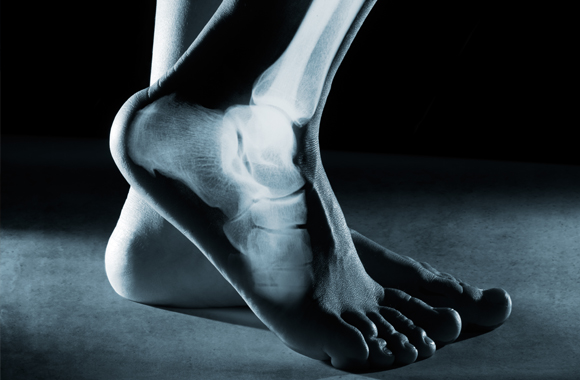Symptoms of a Foot and Ankle Fracture
If you have fractured your foot or ankle, you may have one or more of the following symptoms:
- Pain and swelling present in the foot and ankle region or up towards the knee
- Deformity of the bone in the foot or ankle
- Bruising and tenderness
- Intensified pain when placing weight on the affected leg
- Inflammation and redness

Causes of Foot and Ankle Fractures
There are numerous ways that you can fracture the foot and ankle, including starting a new activity that involves significant impact on the foot to getting into a car accident. Other ways a foot and ankle fracture can occur include:
- Repetitive stress over time
- Sudden twisting motion of the lower leg
- High force impact
- Over-flexing or over-extending the ankle joint
Diagnosing a Foot or Ankle Fracture
Foot and ankle fractures are often diagnosed through diagnostic imaging, like X-rays. X-rays can clearly illustrate the outline of the bones inside our body to determine the location and severity of the damage within the region. If an injury is more severe or if the type of fracture is unclear, further testing with an MRI or CT scan may be necessary to determine the full extent of the break.
Treatments for a Foot and Ankle Fracture
If left untreated, foot and ankle fractures can lead to more serious complications, so it is essential to seek medical attention at Motion Orthopaedics for an accurate diagnosis and treatment plan. The goal for foot and ankle fracture treatment is for the bones to heal as close to their original alignment as possible to prevent any instability, which can lead to the development of arthritis later in life. Mild fractures may be treated nonsurgically with:
- RICE: rest, ice, compression, and elevation
- Over-the-counter pain relievers
- Functional support: splint, short leg cast, walking boot, crutches
- Physical therapy
For more severe fractures, a surgical technique may be required to ensure the bones heal in their proper place. Surgeries may be completed as an open repair or through a minimally-invasive arthroscopy.

